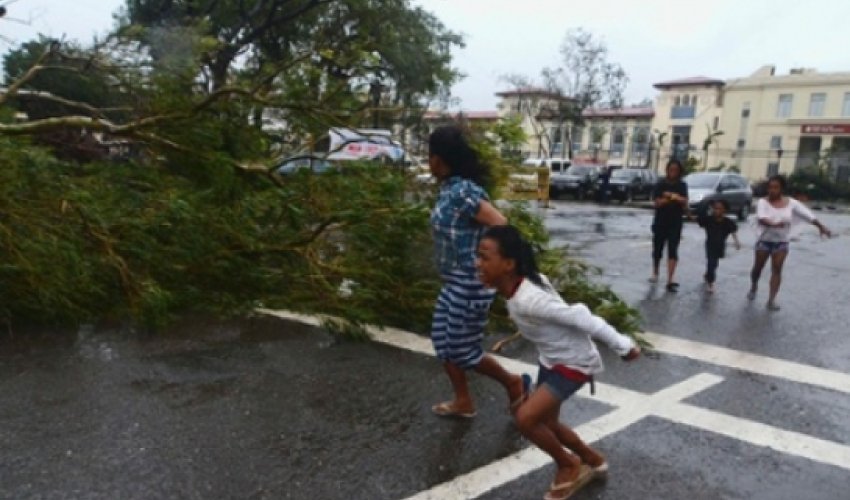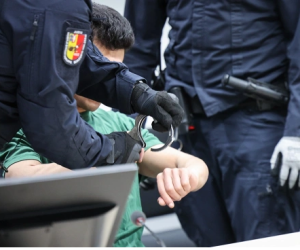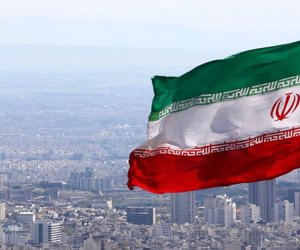Life after typhoon Haiyan

Ginevey Caso recounts her memories of typhoon Haiyan, which destroyed her simple wooden home three months ago, with almost casual cheerfulness. "My house fell down and there is no more house. Now I am staying in the lower part of the village under a tarpaulin," she says as two of her children play nearby.Caso is separated from her husband and has to support her children, three boys and a girl. Her youngest is seven months and her eldest is 10; both are boys. She lives in Magnlotang barangay, or village, which is a two-hour drive from Cebu, the Philippines' second-largest city, along a scenic coastal road that hugs the shore before climbing into green-clad hills lined with coconut trees and sugar cane. The sea is flat as a mirror, and it is hard to imagine the brute force of a superstorm on a sunny day like this.Although the island of Cebu was not as badly hit as Leyte and its capital, Tacloban, to the east, it still took a battering, especially in the north. Villagers describe hearing winds resembling a ship's engine or a helicopter for about two and a half hours. Northern Cebu is littered with damaged buildings, with roofs bent out of shape or missing altogether. Many coconut trees have fallen and the few that remain have fronds twisted into a giant knot at the top of the trunk.People in Cebu are still picking up the pieces from typhoon Haiyan, literally in many cases. Caso, along with about 50 others, is taking two-hour classes on child nutrition and disaster-risk reduction, held in the village school in the morning. The women sit with their infants inside a white Unicef tent, their colourful flip-flops piled high outside.They are encouraged to breastfeed for the first year, then gradually add nutritious vegetables such as squash or moringa leaves to congee, a ubiquitous soupy rice. The classes, organised by the charity World Vision, were designed to stave off malnutrition after the devastation caused by Haiyan, or Yolanda, as the typhoon is known in the Philippines.As Caso talks about how she is trying to save money, her smile suddenly gives way to a trickle of tears. "I am working, giving pedicures and manicures and [as] I save, I buy a little more," she says. "I need to buy GI sheets [corrugated iron sheets], wood for walls and cement for flooring. But there are not too many customers [for her manicures and pedicures]."She is looking to build a 10-12 sq metre house, which is considerably smaller than the standard 19 sq metre, she adds, as her daughter, Samantha Pearl, plays with a Barbie doll, and James Andrew, one of her boys, with a teddy bear.Not far from where Caso lives is another school that was badly damaged. A building at the entrance had to be demolished because it was unsafe. White smoke drifts from waste being burned on the cement floor, which is all that is left of the building. At the back, a green corrugated iron roof is buckled and plaster sticks out from underneath, but classes continue.Romano Sarsalejo is the diminutive but indomitable headteacher, resplendent in a pink jacket. "I climbed to the top of the hill – it was very difficult because of the fallen trees – and waited two and a half hours to get a one-bar signal on my mobile phone to call the Cebu city education department," she explains. "I told them: 'How I can hold classes' in this situation. It was 14 November. They came the following day."In one particularly badly hit barangay, Mahawak, 653 of 732 homes were destroyed by the typhoon. Virginia Samsung, who has found shelter in a makeshift wooden shack near a fallen tree, says: "I was warned of the storm by my daughter and we evacuated temporarily to the city on the Thursday. We came back on Sunday to find almost all the homes destroyed."Samsung, along with others whose homes were demolished, has been receiving unconditional cash transfers – money with no strings attached. For December and January, about 10,000 families – approximately 50,000 people – received $60 (£40) each month. The scheme in north Cebu was funded by the UN's World Food Programme and implemented by World Vision using smartphone-like devices to read bar codes on bank cards given to beneficiaries."Two weeks after the typhoon, the markets were working again, supplies were available, so we decided to use cash transfers. If the markets were not working, then maybe we would have distributed food," says Filomena Portales, a director at World Vision Philippines.The cash is supposed to be mainly for food, but Samsung says she has spent most of the money on building materials, which does not seem to overly concern World Vision. This approach is typical of the flexibility of unconditional cash transfers, which are being used increasingly in emergencies.Samsung is stoical about the money drying up. "Well, that's the end of it. We're very thankful but now we'll have to look for other options," she says.Helen Compoesto, the Mahawak village secretary, is worried about the state of the land and its crops. "There is nothing to harvest; all our banana plants have been destroyed. What will we do?" she says.As for Caso, even though times are tough, with fewer customers booking beauty treatments, for the time being she is resisting asking others, including her mother, for help. "I want to stand on my own two feet," she says.(theguardian.com)ANN.Az
Similar news
Similar news
Latest news 
More news 



































 Photo
Photo 



 Video
Video 

